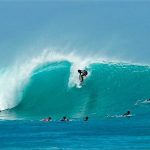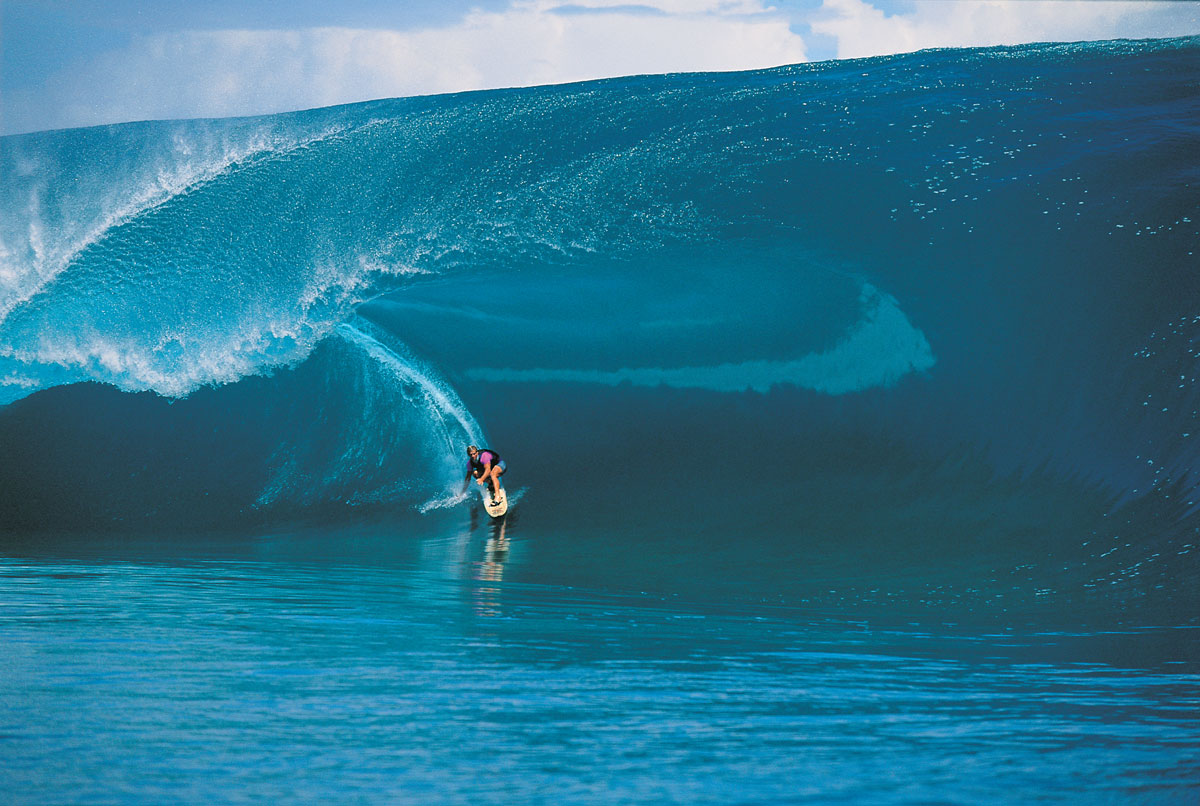
What is swell?
In the context of the ocean, sea, or lake, a Swell is a series of mechanical waves on the surface of the water that occurs in the absence of a direct, direct impact on it from the external environment, such as wind tremors, etc.
Such waves are formed due to current in regions significantly remote from the coast.
The best waves for surfing result from the interaction of winds on the water’s surface far, far away in the ocean.

It all starts far out in the ocean, where strong winds blow and storms rage. The wind blows from an area of high pressure to a low-pressure place.
These areas are separated by many kilometers in the sea, so the wind blows over a vast area, transferring part of its energy to the water due to the frictional force.
Where this happens, the ocean is more like a bubbling soup: like a storm at sea, only the scale is more significant.
There are small and large waves here, all interspersed, superimposed on each other. However, the energy of water also does not stand still but moves in a specific direction.
Because the ocean is very, very large, and waves of different sizes move at different speeds, during the time until all this seething porridge reaches the coast, it is “sifted,” some small waves add up to others into large ones, others, on the contrary, mutually destroyed.

The local coastal wind can also form small waves, but it can also degrade the ocean’s quality; it all depends on its direction.
Wind swells are waves that do not have time to “sift” by distance since the storm is raging not so far from the coast.
Wind swells are usually of inferior quality to ground swells, since large and small waves come in a mixture, however, and they can be rolled, thanks to surfing, for example, in Sochi.
If we talk about the effect of wind on the groundswell, if it blows on the shore (the so-called “onshore” from the English. Onshore), it is the culprit of rough and closing waves, while ), on the contrary, promotes the formation of a sound wave, since it works as a holding pillow.
How are waves formed?

Not every swell is destined to be the waves of surfing. Although, it would be more correct to say – not everywhere. For a lock to be caught, it must break in a certain way.
The ocean is bottomless, so the mass of water moves evenly, but when the wave reaches shallow water near the coast, it slows down, its length shortens, and the ridge grows; that is, the wave becomes higher.
It is easy to visualize – imagine a stretched spring in motion; when it hits an obstacle, it starts to compress, and its diameter becomes more considerable.
Finally, the depth, or shallowness, reaches a critical value; the rising wave can no longer become larger and collapses.
It happens is called the line-up, and this is where surfers sit, waiting for a suitable lock.

The waveform directly depends on the shape of the bottom: the sharper it becomes shallow, the stronger the wave. Usually, the most brilliant and even trumpeting waves are born.
The elevation difference is almost instantaneous, for example, at the bottom of a huge rock or the beginning of a reef plateau.
IT IS WHAT SHARP WAVES ARE PRODUCED: WATER BUMPS INTO AN OBSTACLE AND PUSSES UP, FORMING A STEEP, PUBLISHING WAVE.

IT IS SO POSITIVE WAVES ARE PRODUCED: THE COASTAL SHAFT INCREASES GRADUALLY, WATER IS SLOWLY FORCED UP AND FORMS A GRADUATE WAVE.
Thus, for the formation of sound waves for surfing, a combination of many factors is needed: for a storm to pass in the distance, a good swell blows in the right direction, so that this swell has no obstacles on its way, and the bottom near the coast has a particular shape.
It would seem physics, but as you imagine how much of everything should coincide, you immediately understand – magic.




